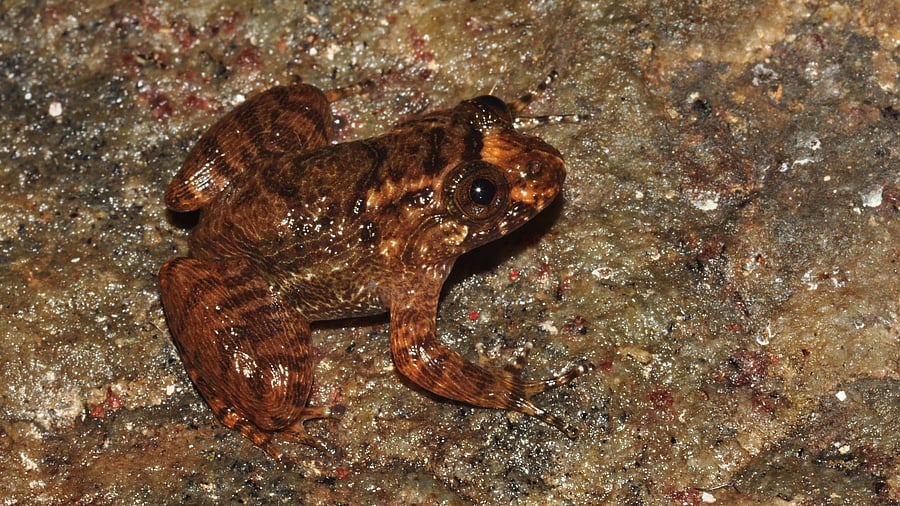
Credit: Prof KS Seshadri & Preeti Saryan
Bengaluru: In the rain-drenched evergreen forests of the Western Ghats, two little frogs are offering scientists big insights into how species coexist without stepping on each other’s toes.
A new study by ecologists Prof KS Seshadri and Preeti Saryan, published in the Journal of Natural History, investigates the diets of two endemic frog species — Micrixalus fuscus and Nyctibatrachus vasanthi — and explores how they share the same habitat while avoiding competition.
Ecological theory suggests that when two species compete for the same resource, they must evolve ways to avoid direct conflict — either by consuming different types of food, being active at different times, or occupying different microhabitats.
Surprisingly, no systematic study had tested these ideas in Indian frogs until now. Most dietary information from the region has been anecdotal or based on limited sampling.
To fill this gap, researchers studied the stomach contents of over 100 frogs from a single stream in Kakachi, near Tirunelveli in Tamil Nadu. Using a non-lethal stomach flushing technique, they collected and analysed over 500 prey items, which included insects, crustaceans, and other arthropods.
Despite similarities in the number and volume of prey consumed, the two species showed distinct dietary preferences.
The diurnal M fuscus — a visual forager with relatively larger eyes — fed mostly on flying insects like flies and wasps. The nocturnal Nyctibatrachus vasanthi, with a flatter body and broader head, specialised in aquatic prey such as amphipods and isopods. These dietary differences closely mirrored their activity periods, habitats, and even head morphology.
The researchers also measured head width, snout length and eye position, finding clear links between these features and the types of prey consumed. Frogs with wider gapes could handle larger or aquatic prey, while those with bigger eyes were more efficient at targeting mobile insects.
These findings not only help explain how the two species coexist, but also underscore the importance of understanding dietary ecology in a rapidly changing world. For conservationists, such information is crucial. If amphibians are to be bred in captivity or reintroduced into the wild, knowing what they naturally eat — and why — could be the key to their survival.
While India is still far from integrating dietary data into conservation strategies, this research lays important groundwork. It is a reminder that even basic questions — like what a frog eats — can open doors to deeper ecological understanding and long-term protection of biodiversity.
Credit: Prof KS Seshadri & Preeti Saryan